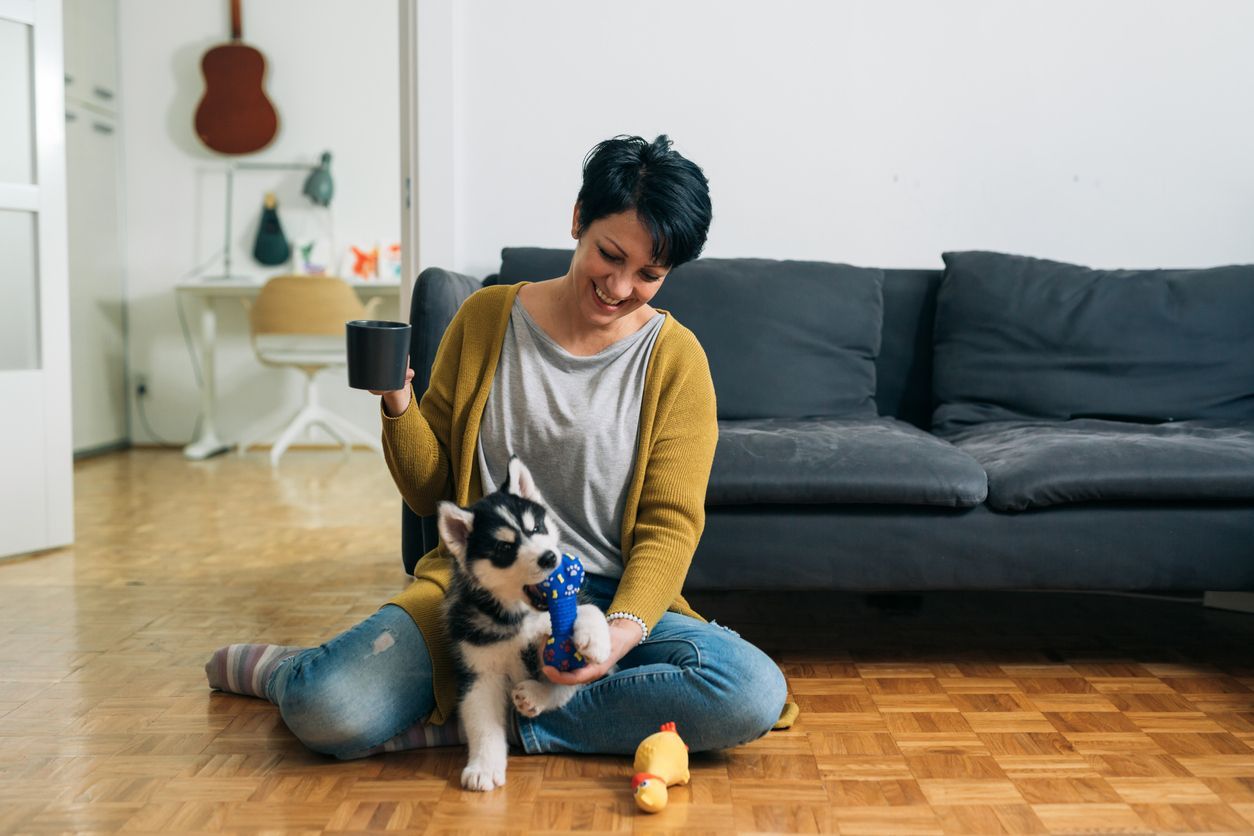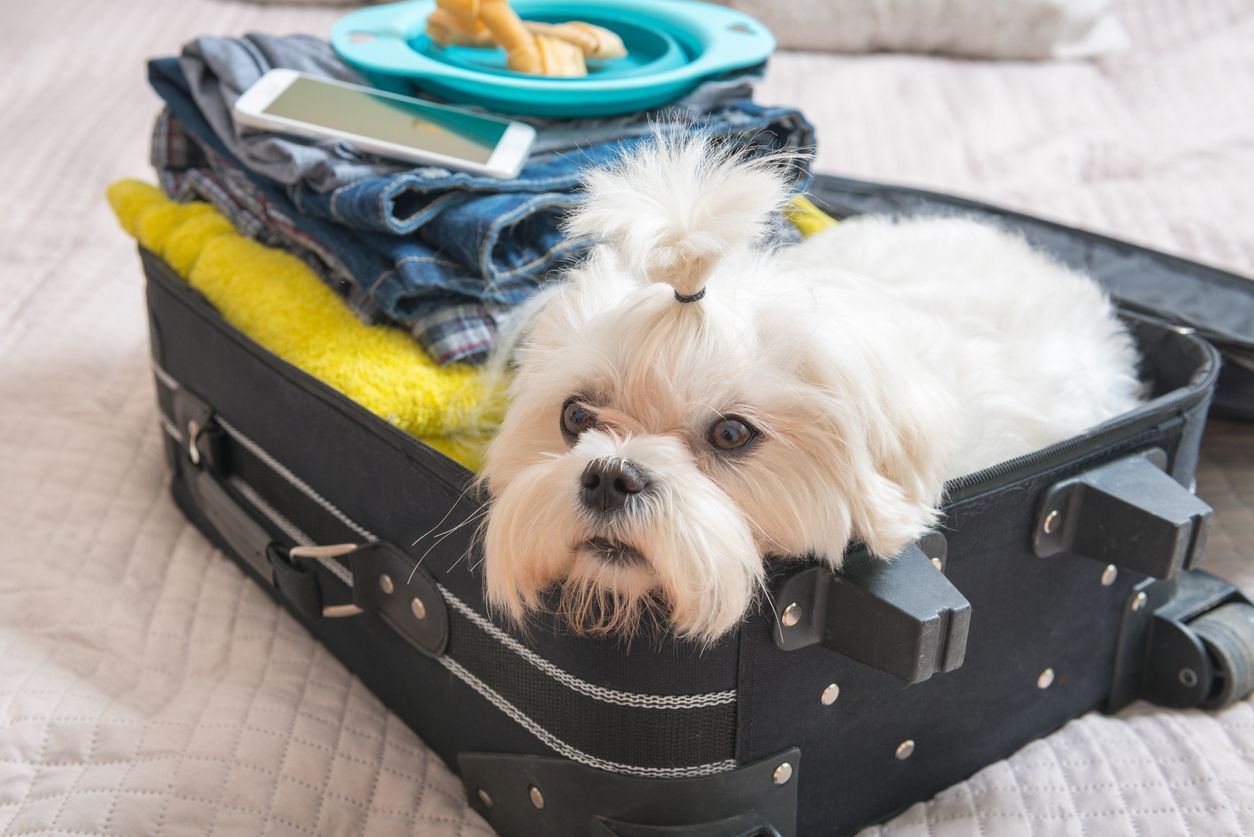Top tips for flea-free homes

Dealing with a flea infestation in your home can be a frustrating experience. They not only cause discomfort for your pets, but they also can spread dangerous diseases from pets to humans. Left unattended, a flea infestation can become a long-term problem, so it’s crucial you take action as soon as you notice them in your home.
Key takeaways
- Stay up to date with flea treatments for your pets, as advised by your veterinarian.
- Increased household vacuuming can be beneficial when dealing with a flea infestation.
- Steam clean carpets and furniture as well as wash clothes using high heat to kill fleas and their eggs.
How to get rid of fleas in your house
Start by seeing a veterinarian for proper flea treatments for your pets. This is crucial for several reasons. First and foremost, you’ll never be able to get rid of the fleas in your house as long as your pets aren’t protected. Many vet-approved flea control products are so effective that you don’t have to do anything else to treat your house. Talk to a veterinarian so they can recommend the best flea prevention products based on the specific needs of your pet and the severity of the infestation.
Untreated flea infestations can lead to serious health problems for you and your pets, including anemia, skin infections, and even tapeworms. Note that over-the-counter flea treatments may not be safe or effective for all pets. Veterinarians can prescribe flea treatments that are tailored to your pet's specific needs and health status.
Once you’ve addressed the heart of the problem by getting your pets on a veterinarian-recommended flea control product, there are several steps you can take to try to hasten the elimination of fleas from your home.
Tip 1: Vacuum frequently
Vacuuming can help remove flea eggs, larvae, and adult fleas from plush surfaces in your home such as rugs, carpet, and furniture. When vacuuming, it's important to use a vacuum with strong suction power and a filter that can trap small particles like flea debris. It's also recommended to vacuum all areas of your home where your pets frequently spend time, including furniture and bedding.
To dispose of the vacuum debris, it's best to immediately empty the vacuum bag or canister outside, away from your home, and into a sealed plastic bag. This will help prevent any live fleas or flea eggs from re-infesting your home. It's also a good idea to clean your vacuum thoroughly after each use to prevent any flea debris from accumulating.
Tip 2: Wash your pet’s toys
Washing toys and other plush items can help remove some of the fleas in your house, since fleas can hide and lay eggs in these materials.
To effectively wash these items, use hot water and a detergent that's safe for the material. It’s important to dry the items thoroughly, as fleas and their eggs can survive in damp environments. Failing to wash these items can lead to re-infestation, as fleas can continue to thrive and lay eggs in the untreated materials. Keep in mind that your efforts to eliminate fleas from toys and bedding will only be successful once your pets are on consistent, vet recommended flea control.
Tip 3: Clean with steam
Steam cleaning may be helpful when used as part of a larger routine for getting rid of fleas in the house, particularly furniture and carpets. The high temperature of steam can kill fleas and their eggs without the need for harsh chemicals or pesticides.
When steam cleaning, it's important to first vacuum the area thoroughly to remove any debris or loose fleas. Then, use a steam cleaner with a high temperature setting to clean the surfaces. Pay close attention to areas where fleas are likely to hide, such as the crevasses of your couch.
It's important to note that steam cleaning alone is not enough to eliminate a flea infestation. While a good strategy to bolster your flea extermination effort, steam cleaning should always be used alongside keeping pets on vet-recommended flea prevention products.
Tip 4: Monitor infestations with traps
Flea traps are an effective tool in evaluating the efficacy of your ongoing flea extermination strategy. Traps work by attracting and trapping fleas, preventing them from reproducing and are a non-toxic way to monitor the level of infestation in your home.
There are two main types of flea traps:
- Ready-made traps: These traps use sticky pads, light, heat, or CO2 to attract fleas.
- DIY traps: Can be made using soapy water or a nightlight over a bowl of soapy water.
Regular use of flea traps are useful to monitor for the presence of fleas, but do not significantly decrease numbers of fleas in an infested environment. Flea traps should not be considered a form of flea prevention or treatment. Rather, they are a tool to help identify problem areas and access points in your home so you know where to focus your efforts.
Tip 5: Consider outdoor treatment
Outdoor treatments can be helpful when planning how to effectively get rid of fleas in the house. Insecticides and nematodes are two common methods of outdoor flea control.
Insecticides can be applied to outdoor areas where fleas are likely to congregate, such as pet bedding, shaded areas, and under porches or decks. Nematodes are microscopic worms that can be used to control flea larvae in soil. They are placed in the soil in areas where fleas are likely to breed, such as around pet kennels or under shrubs.
When using outdoor treatments, it's important to prioritize safety. Keep pets and children away from chemically treated areas until the product has dried or settled into the soil. Wear protective clothing and follow the instructions carefully. If you are unsure about how to use outdoor flea treatments safely and responsibly, consider consulting with a professional pest control company. Additionally, remember that outdoor treatments are not effective unless they are deployed along with regular use of veterinarian-recommended flea control products on your pets.
Tip 6: Get professional pest control
If your flea infestation persists after attempting DIY methods, it’s time to call in a professional pest control service. A professional can assess the severity of the infestation and provide effective treatment options while also ensuring the safety of your family, including your pets.
Prevention is key
As a pet owner, preventing fleas from getting into your home in the first place is the best way to avoid dealing with a frustrating and costly infestation. While it can be difficult to completely eliminate the risk of fleas, there are several steps you can take to minimize the chances of your pets bringing fleas inside your house. By following these simple preventative measures, you can help keep your home and pets flea-free.
Use veterinarian-approved flea prevention products
Consulting a veterinarian is crucial in selecting the right flea prevention for dogs, cats, and other pets. This is especially important for households with multiple pets. Different animals have different needs. For example, some products that are safe for use on dogs are actually toxic to cats. A veterinarian can recommend flea prevention products that are appropriate for your pets, while also taking into consideration any existing health conditions or medications your pets may be on.
Keep your home clean
Maintaining regular cleaning practices won’t prevent flea infestations, but it can make it harder for fleas to survive in your house. Vacuuming carpets, furniture, and pet bedding regularly can help remove fleas from the environment. Washing pet bedding and toys frequently also helps remove fleas, and using a steam cleaner on furniture and carpets can kill fleas and their eggs.
Avoid contact with wild animals
Wild or stray animals can be major carriers of fleas, so it is important to avoid contact with them whenever possible. If you come into contact with a wild or stray animal, take precautions by wearing protective clothing and gloves. Avoid bringing them into your home and keep your pets away from them as well. If your dog has fleas or you suspect your pet has been in contact with an infested animal, it’s a good idea to contact a veterinarian for advice on how to best proceed.
Check for fleas on new pets or belongings
To prevent introducing fleas to your household, check any new pets or items (such as pre-owned furniture) for signs of fleas before bringing them inside. Use a flea comb on new pets and inspect their bedding and belongings for fleas. Also be sure to wash all secondhand clothing to remove any potential fleas or eggs. If possible, have any new pets seen by a veterinarian before bringing them into the household. It’s easy to overlook a small population with a visual inspection. Your vet can recommend treatment that will rapidly kill fleas whether you spot them or not so you won’t introduce them into your household.
The bottom line
Getting rid of fleas in the house takes time and dedication. Regular cleaning, laundry, and environmental control methods are useful tools to help address a flea infestation in the home, but none of these methods are effective at eradicating fleas without also keeping pets on consistent, vet-recommended flea prevention.
Seeking veterinary advice is crucial for finding the best flea prevention and treatment methods for your pets. To keep your home flea free, book an online appointment with a Vetster vet, and get trustworthy advice for how to keep fleas out of your house and off your pets.
FAQs - Top tips for flea-free homes
How do I get rid of fleas in my house fast naturally?
There are no natural remedies to get rid of fleas in your house quickly. Essential oils, diatomaceous earth, and vinegar are popular DIY solutions but there is no evidence that these natural products are effective at controlling fleas. Talk to a veterinarian to learn about safe and effective options for eliminating fleas in your house. It is important to note that even with the most effective methods, it takes at least three months to eliminate an existing flea population.
How hard is it to get rid of a flea infestation?
Dealing with a flea infestation can be challenging and time-consuming. Fleas can lay hundreds of eggs in a short amount of time, which can quickly lead to a widespread infestation. Repeated vacuuming and cleaning are useful strategies to deal with an infestation, but the only way to fully eradicate a flea population is to keep your pets on regular, vet recommended, flea prevention.
Is flea extermination safe?
Flea extermination products for use in your house or yard can be safe if used correctly and with the proper precautions. It's important to follow the instructions on any insecticide products carefully and avoid overuse or misuse. It's also crucial to keep pets and children away from treated areas until it's safe to re-enter. If you're concerned about the safety of flea extermination, consult a pest elimination professional or an online veterinarian for guidance.
Are flea prevention products safe for pets?
Always consult a veterinarian before choosing flea control for your pet. Many products on the market are unsafe and ineffective, particularly for cats. A veterinarian can prescribe the best parasite control for every pet in your household.
How often should I apply flea prevention products to my pets?
The frequency of flea prevention product application varies depending on the product, the pet, and the level of flea infestation in the area. Some products require monthly application, while others may be effective for several months. It's best to follow the instructions on the product label and consult with your veterinarian for recommendations.




